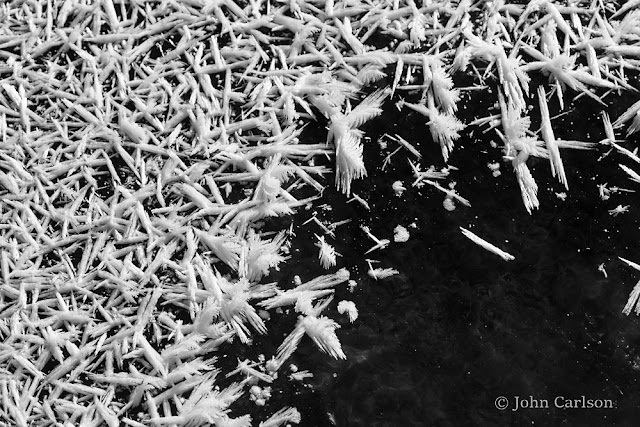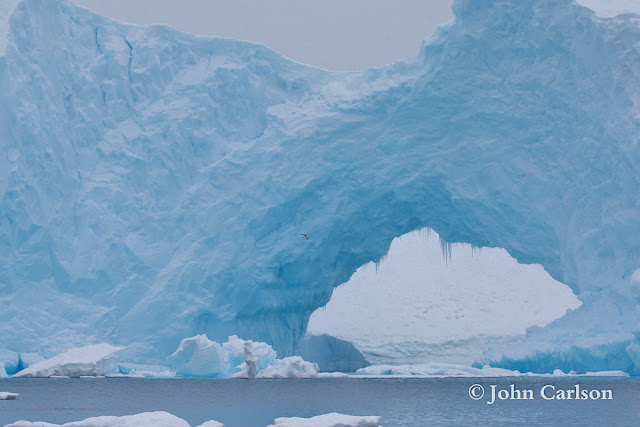Another walk along the Yellowstone and more photos of ice patterns.
A collection of thoughts and photos of my life and work in the northern Great Plains of North America (and occasionally other places in the world).
Sunday, November 29, 2015
Friday, November 27, 2015
River Ice
A recent cold snap across the northern Great Plains turned our rather warm Fall on it's head and the Yellowstone River is now sending large ice pans downstream. The patterns in the ice on the side channels always catch my eye.
Saturday, October 3, 2015
September Rituals
It happens every September. Throughout North America (but mostly in the West), the Elk rut commences and the steroidal flute notes and belching grunts of male elk signal the change of daylight and temperature as we slip into fall. I also have my fall ritual which centers around the gathering of these hormonal beasts and their massive hood ornaments of bone. I go to watch their antics and listen to their aggressive music at a place where they have become accustom to having an audience - the Slippery Ann Elk Viewing Area on the Charles M. Russell Wildlife Refuge.
The viewing areas is closed to hunting, an artifact of the need to protect the area around a long gone work station. The elk took advantage of the closure and congregated in the cottonwoods along the river during the fall. When the work station moved to a more convenient location along the highway, the hunting closure and the resultant elk congregation persisted. A number of years ago I spent a portion of a summer working out of the work station before the last of the buildings were removed which gives my annual visits a tinge of homecoming to go along with the spectacle of elk.
It seems like I have only been able to carve out a day or two at the most for my trips north and this year was no exception. My oldest son got out of school early one day last week and we took advantage of the time to make the two hour dash to the elk. The day had been clear and I was looking forward to a well lit evening, but just as we arrived at the viewing area the clouds slipped in from the north and it appeared that the good evening light was gone for the day. However, for a short stretch of time the evening rays managed to find a gap in the clouds and lit up the riverbottom in some wonderful golden light.
 |
| This is cow #154 - a participant in a study to see where cow elk spend the hunting season. I suspect she previously had a GPS collar around her neck which fell off last winter. |
Saturday, September 5, 2015
Falcons on the Prairie
I was on a field trip in South Dakota last week and at our first stop near a prairie dog town on the Fort Pierre National Grasslands, our local guide Dan Svingen pointed out a Prairie Falcon flying across the dog town. The Prairie Falcon was soon attacked from above by a Merlin.
No sooner had the Merlin headed out when a Peregrine Falcon took a couple of passes at the Prairie Falcon.
Other interesting observations on the trip included the following insects - a bit tattered Regal Fritillary,
a bumblebee of undetermined species,
and this Praying Mantis,
Saturday, June 27, 2015
Arctic Tern - A Life of Ice, Light and Flight
On the afternoon of January 12, 2015 I was immersed in a surreal setting of ice, snow and water. We were just west of Booth Island and north of Pleneau Island on the Graham Coast of the Antarctic Peninsula. Above me in the clouds to the east were Mt Shackleton and Mt. Scott, but I had to trust the map to tell me that. There were no mountains to be seen that day. The clouds were low and large flakes of snow floated from the what was left of the sky, seemingly spontaneously forming just above our heads.
We were there because of the icebergs. This area is a frequent stop of tour ships because the currents and islands conspire to push icebergs into this area where they slowly decay into constantly changing abstract sculptures.
The day had started out with a curious Minke Whale checking out our Zodiacs as the staff prepared to transport guests to Peterman Island where we were able to visit colonies of breeding Gentoo and Adelie Penguins with a few Blue-eyed Shag nests in the mix.
 |
| Sandra and her friend the curious Minke Whale. |
 |
| A chunk of bar ice where you can see how the water erodes small cup shaped divots from the ice. Photo by Sandra Petrowitz. |
They were perched high on the ramparts of towering bergs in an Antarctic version of birds on a wire.
The migration of this species is quite remarkable. They breed in their namesake region - the Arctic, but then migrate south through the Atlantic Ocean (and probably the Pacific Ocean as well) to spend their non-breeding summer in the Antarctic Pack ice. We know more about the portion of the population the migrates through the Atlantic through some interesting research conducted on Arctic Terns in Greenland and Iceland known as the Arctic Tern Migration Project. Below are a couple of maps that show the migration route and winter areas of the eleven birds they tracked (both images from the Greenland Institute of Natural Resources)
One iceberg in particular formed a spectacular eroded backstop for the foraging terns.
There were a few other creatures foraging in the same area with the terns. We observed another less inquisitive Minke Whale that afternoon as well as a Crabeater Seal lounging in an iceberg pool and a few Kelp Gulls.
So why did I see so many on this trip? One explanation is that I just hadn't been in the right place at the right time and they have always wintered in this area. However, I believe that this year the pack ice was so heavy in the Weddell Sea that there was essentially no open water and the birds wound up concentrating along the Antarctic Peninsula in numbers that would not be found during a "normal" year just to be able to find something to eat.
Perhaps a more fitting name for this bird would be the Polar Tern, since they spend a majority of their life in both polar areas where they also experience perpetual daylight. The distances these birds migrate is impressive and when they are not breeding or wintering in the polar regions they are flying in a twisted migration loop back and forth across the Atlantic Ocean.
Subscribe to:
Posts (Atom)




























































